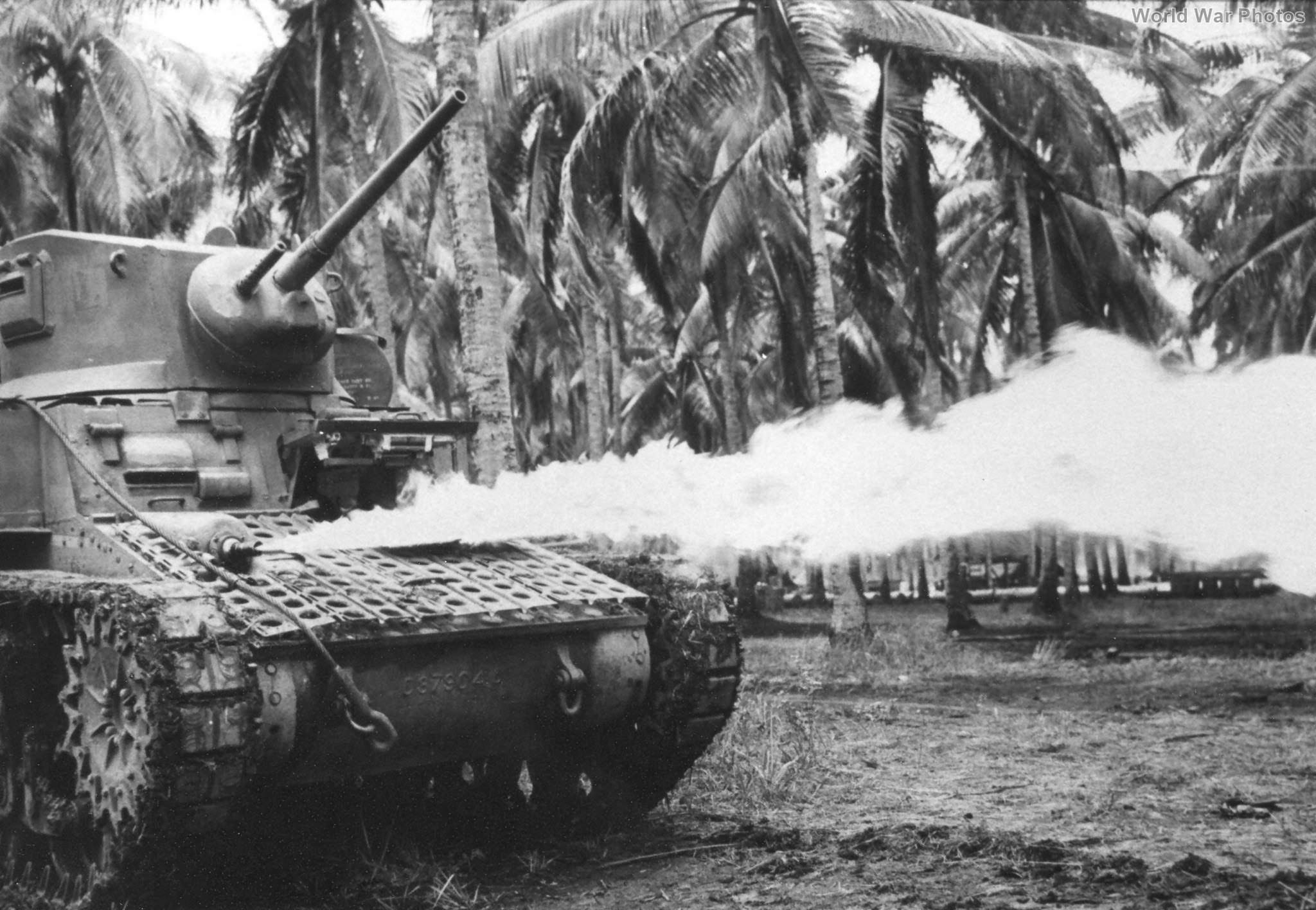Development and Use of Flamethrower Tanks in the Pacific Theater
Challenges with Japanese Bunkers
During the Pacific campaign of World War II, Japanese defenses often relied heavily on reinforced bunkers that were resistant to conventional tank guns, such as the 37mm and 75mm. This posed significant challenges for U.S. forces, particularly the Marines, who initially relied on man-portable M1A1 flamethrowers to neutralize these bunkers. However, the flamethrower crews were highly vulnerable due to the weapon’s limited range and the heavy equipment they had to carry.
Early Attempts at Tank-Mounted Flamethrowers
To improve the effectiveness of flamethrowers and reduce the risk to operators, both the Marines and the U.S. Army began experimenting with mounting M1A1 flamethrowers on tanks in early 1943, drawing from their experiences in the Guadalcanal campaign.
M3A1 Light Tank Modifications: The initial Marine attempts involved firing the M1A1 flamethrower out of the side pistol port of the M3A1 light tank turret. This method was soon deemed unsatisfactory, leading to modifications that involved replacing the bow machine gun with a flamethrower. This setup also allowed for two fuel units to be carried onboard the tank.
- First Combat Use: The first recorded use of a flamethrower tank by the Marines occurred on the Arawe peninsula, where Company B, 1st Tank Battalion supported the Army’s 112th Cavalry. Despite the innovation, the flamethrower failed to ignite the fuel, forcing the crew to manually ignite it with a thermite grenade.
US Army Usage: The Army used similar flamethrower tanks during operations along the Torokina River on Bougainville in February 1944. They employed a method of igniting the flamethrower using tracer ammunition to ensure successful ignition of the fuel.
Central Pacific Efforts and Innovations
In parallel with these local improvisations in the Southwest Pacific, Marine and Army units in the Central Pacific developed their own conversions. A key advancement was the creation of an enlarged fuel tank by Honolulu IronWorks, which was mounted on both amphibious tractors (amtracs) and light tanks.
- Operations on Kwajalein: These modified vehicles were first used during the Kwajalein operation in early 1944, but they faced significant challenges. Saltwater damage to the flame guns during the landings and issues with the ignition system rendered these early attempts largely unsuccessful. Nonetheless, at least one flamethrower tank was employed by the Marine 4th Tank Battalion during the fighting on Roi-Namur.
Transition to Dedicated Flamethrower Tanks
The disappointing performance of the improvised M1A1 flamethrower tanks led to a search for more effective solutions. This led to the discovery of the E4-5 auxiliary tank flamethrower in Washington, which could be used as secondary armament on tanks. The Army requested 40 of these flamethrowers, but the first shipment did not arrive in time for the Marianas campaign.
- Canadian Ronson F.U.L. Mk. IV: Concurrently, the U.S. Army also explored more powerful flamethrowers that could replace the main gun on tanks. Approximately 40 Canadian Ronson F.U.L. Mk. IV flamethrowers were shipped to the Central Pacific, where they were adapted for use in obsolete Marine M3A1 light tanks by Army and Navy personnel in Hawaii. These conversions, known as “Satan” flame tanks, featured a 170-gallon fuel tank and provided better range than previous models, although they were limited to a 180-degree turret traverse.
- Deployment in the Marianas: Prior to the Marianas operation, 24 light tanks were converted to Satan flame tanks and deployed in specialized flamethrower companies within the 2nd and 4th Tank Battalions. Each company was equipped with 12 Satan flame tanks and three new M5A1 light tanks to provide gunfire support.
